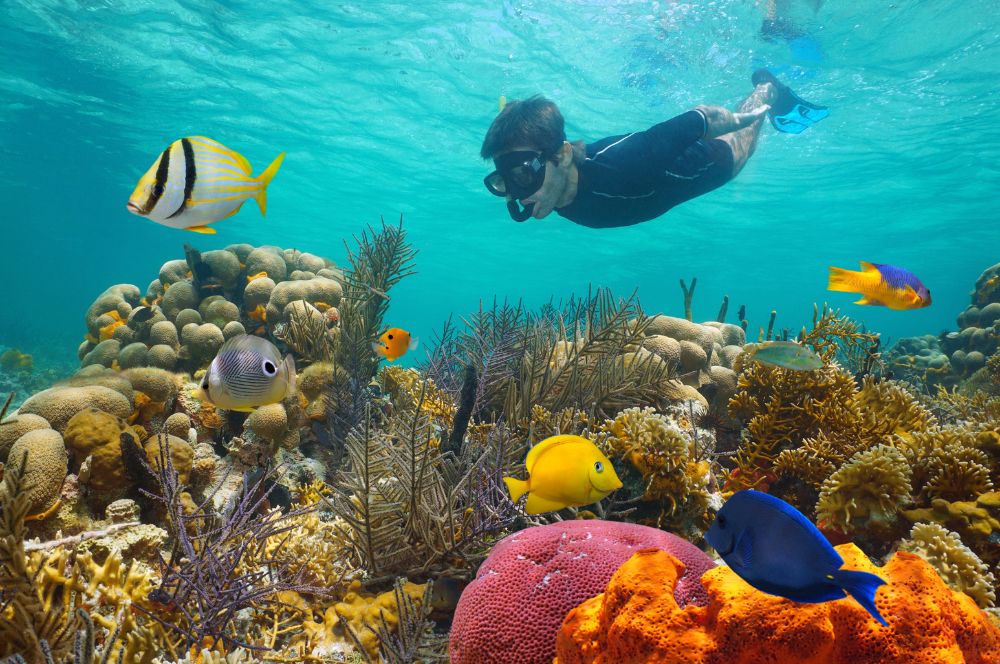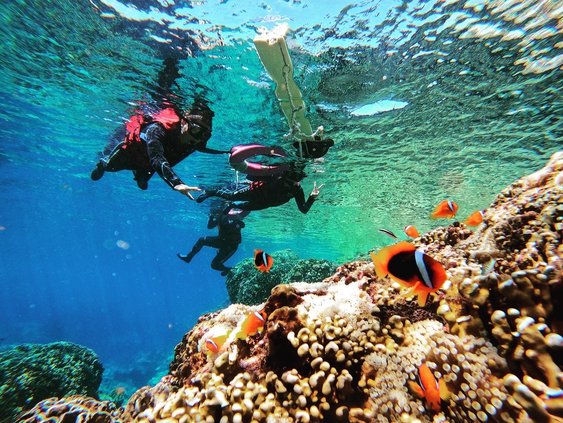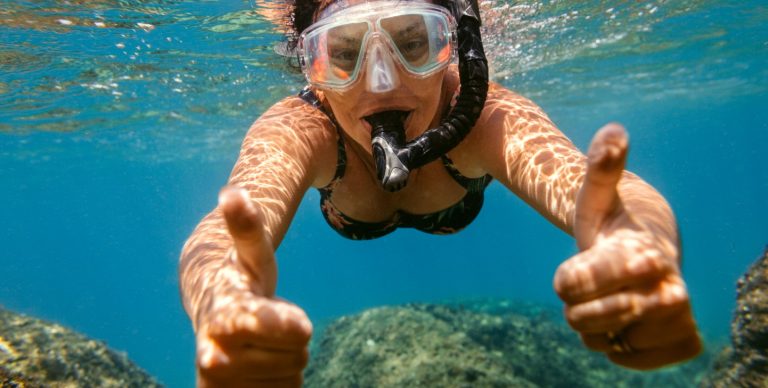The Top 10 Crucial Pointers for Beginner Snorkelers: Uncovering the Secrets of the Sea!
The undersea world is full of fascinating species, vivid hues, and a calmness that is unmatched on earth. A great and easy method to get a glimpse of this enchanted world is via snorkeling, which requires no prior training and very little equipment. A little planning and direction, though, can go a long way toward guaranteeing a safe, cozy, and genuinely remarkable first snorkeling experience—just like with any new adventure. Especially in the gorgeous seas of Tagum, Davao Region, Philippines, Let’s Trek It is here to serve as your underwater guide, providing 10 crucial pointers to enable novice snorkelers dive into joy and discover the amazing delights beneath the surface!
I. Gearing Up for Underwater Exploration:
- Invest in a Properly Fitting Mask: A leaky mask is the quickest way to a frustrating snorkeling experience. When trying on a mask, place it on your face (without the strap) and inhale gently through your nose. It should create a comfortable seal that stays in place without you holding it. The skirt (the soft silicone part) should fit snugly against your face. Consider trying different styles to find the best fit for your face shape.
- Choose a Comfortable Snorkel: Snorkels come in various designs. Simple J-shaped snorkels are a good starting point. Some have purge valves (a one-way valve at the bottom) that make it easier to clear water. Ensure the mouthpiece fits comfortably in your mouth without feeling too large or small.
- Fins Can Enhance Your Experience (But Aren’t Always Mandatory): Fins provide propulsion, allowing you to move more efficiently through the water and conserve energy. For beginners, shorter, more flexible fins are often easier to manage. Make sure they fit snugly but not too tightly, and consider wearing neoprene socks if they feel loose or cause chafing. For calm, shallow waters, you might choose to snorkel without fins initially to get comfortable.
II. Mastering the Basics: Getting Comfortable in the Water:
- Practice in Shallow Water First: Before venturing into deeper areas, take some time to get comfortable with your gear in shallow water where you can easily stand. Practice breathing through your snorkel while your face is submerged. This might feel a little unnatural at first, so take it slow and relax.
- Learn to Clear Your Mask and Snorkel: Water inevitably finds its way into your mask and snorkel.
- Clearing Your Mask: If water enters your mask, surface briefly, tilt your head back, and gently blow air out through your nose. The pressure should push the water out through the bottom seal. You can also slightly lift the bottom edge of the mask underwater while blowing.
- Clearing Your Snorkel: If water enters your snorkel, give a sharp, forceful exhale. This “blast” of air should push the water out the top. Some snorkels with purge valves make this even easier – a gentle exhale usually clears the water. Practice both techniques in shallow water until you feel confident.
- Breathe Slowly and Regularly: Resist the urge to hold your breath or take rapid, shallow breaths. Focus on breathing slowly and deeply through your snorkel. This will help you relax, conserve energy, and prevent your mask from fogging up as much.
III. Exploring the Underwater World Responsibly:
- Move Slowly and Gently: Avoid sudden movements or splashing, which can scare away marine life and stir up sediment, reducing visibility. Glide through the water with slow, deliberate kicks of your fins (if you’re using them).
- Respect Marine Life: Observe the underwater world with admiration and respect. Never touch, chase, or feed marine animals. Touching corals can damage their delicate structures, and feeding fish can disrupt their natural feeding habits and the ecosystem. Remember, you are a visitor in their home.
- Be Aware of Your Surroundings: Pay attention to currents, waves, and any potential hazards like sharp rocks or stinging marine life. Snorkel with a buddy if possible, and always be mindful of your distance from shore or your boat. In areas like Tagum, be aware of local conditions and any warnings from your guides.
IV. Enhancing Your Snorkeling Experience:
- Defog Your Mask: Mask fogging can significantly hinder your view. Before entering the water, use a commercial mask defogger, a diluted solution of baby shampoo or dish soap (rinse thoroughly!), or even saliva (rub it on the inside of the lens and then rinse) to prevent fogging.
Bonus Tips for Snorkeling in Tagum, Davao Region, Philippines:
- Explore the Coral Gardens: The waters around Tagum are known for their vibrant coral reefs. Take your time to observe the diverse coral formations and the colorful fish that inhabit them.
- Look for Specific Marine Life: Depending on the location, you might spot clownfish, parrotfish, angelfish, and various other fascinating creatures. Ask local guides about the best spots to see specific marine life.
- Consider a Guided Tour: For your first time, especially in a new location, a guided snorkeling tour can provide valuable insights into the best snorkeling spots, safety information, and identification of marine life.
- Be Mindful of Tide Levels: Tide levels can affect water depth and visibility in certain areas. Local guides will have information on the best times to snorkel.
Conclusion: Dive In and Discover the Magic!
Snorkeling is a truly rewarding activity that opens up a whole new world of beauty and wonder. By following these essential tips, first-time snorkelers can confidently take the plunge and enjoy the incredible underwater landscapes, especially in the pristine waters of destinations like Tagum, Davao Region, Philippines. So, grab your mask, snorkel, and fins, take a deep breath, and prepare to be amazed by the vibrant marine life and breathtaking coral reefs that await you just beneath the surface! Let’s Trek It wishes you many happy and safe snorkeling adventures!



